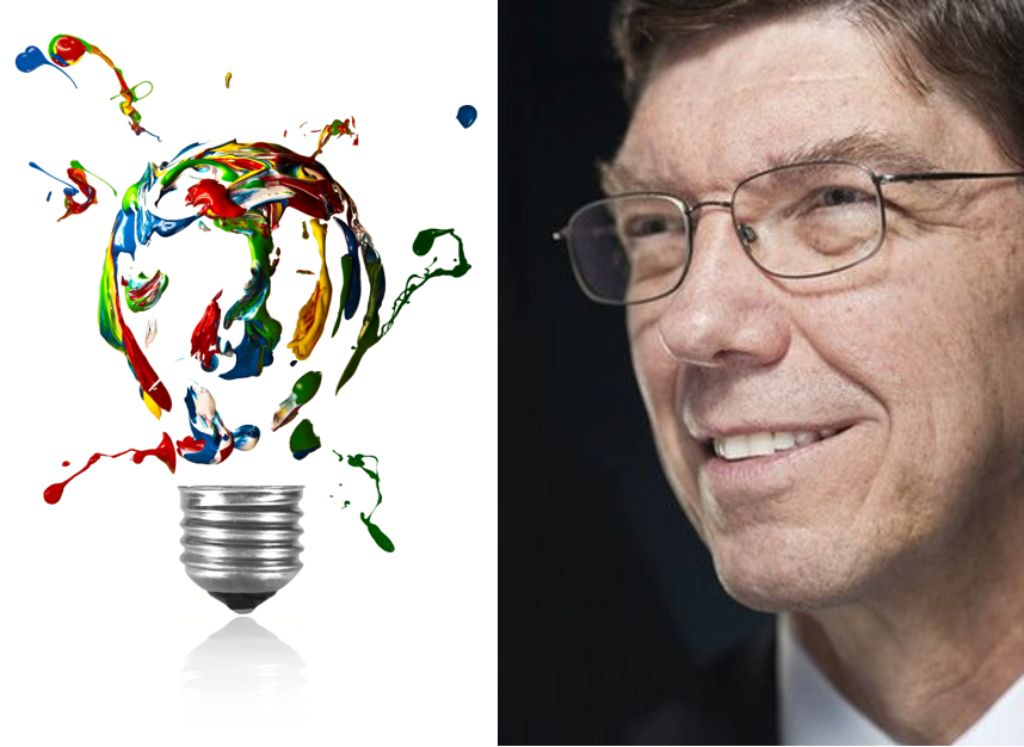
In marketing circles, there are buzzwords galore. And in fact, the Digital Age has ushered in many annoying cliches glommed up by marketers trying to make a point.
But perhaps there is none bigger – and more misunderstood – than this one:
Disruption
Disruption is, in fact, the powerful force we’ve seen rock hundreds of corporate stalwarts, forcing many of them into bankruptcy, and ultimately, extinction. We shake our heads, but are no longer surprised when we read a news story about a venerable brand that has used up all its bullets, ultimately calling it quits.
The graveyard of extinct brands gets bigger every year. Toys-R-Us, Borders, K-Mart, Kodak – the list goes on and on – reminding us that even the biggest corporate behemoths and most popular companies are vulnerable to new innovations putting them out of business.
That’s been an ongoing discussion – or better put, debate – in radio these past couple decades. As streaming media, podcasts, and satellite radio have entered the scene, often with deep pockets and an energy that only entrepreneurs can muster, broadcast radio has found itself in the horns of a dilemma.
Is this just another of those moments similar to ones radio has survived before? After all, radio has innovated its way through television, MTV, and other challengers. As Jarl Mohn told us at our disruption session at last year’s Radio Show, broadcast radio – after all – is the “cockroach medium” – it refuses to die.
Or does the Internet and all its tentacles present an existential threat powerful enough to bring the radio industry to its knees? Or worse?
That’s the question few want to openly discuss, but it’s on the minds of many not just in radio – but in so many other businesses. As CPAs watch  more and more of their clients this time of year turn to DIY tax services like Turbo Tax.
more and more of their clients this time of year turn to DIY tax services like Turbo Tax.
Or big home security companies see more and more homes use easy-to-install Ring-type alarm systems, it’s not difficult to understand why disruption looms like a guillotine – threatening virtually every business on earth.
Especially the mature ones – the companies that “have always done it this way.”
That’s part of the reason why our annual treks to CES have become so important. Sure, we want to see the latest and greatest innovations, inventions, and toys. But veterans of this megawatt tech show know the underlying value in attending CES is to get their heads around the disruptive ideas, concepts, and devices that we can see and touch at the Las Vegas Convention Center, and in other display areas like the Sands’ Eureka Park.
When you see a new innovation at CES, you first try to understand what it does, why it exists, and what role might it play in making our lives better and simpler. And then you leap to the next question:
If this catches on, who’s going to be impacted? What business, big brands, and household names will be affected, disrupted, challenged, and perhaps wiped out as a result of this innovation?
We ran across a company called Rosebud.ai at CES. This is another of the thousands of startups touting AI – Artificial Intelligence – as their innovation engine. As many of you know who are involved in advertising and marketing, the ways in which art and design have been simplified and become more economical have proliferated. Rather than hiring an agency or graphic design team, there are cheap Internet shops aggregating thousands of talented artists to create a new logo for just a couple hundred books.
Rosebud is simply taking this concept to a new level by using the power of AI to create models and spokespeople that aren’t real. They are created by data and design

And like with any basic Internet tool, you can simply use a dashboard to manipulate any of these “models” – to adjust skin tone, facial expression, hair, and of course attitude and expression.
Disruptive? You bet.
Imagine being a model – or better yet, a talent agency that represents them. What does this technology do to your business? How can disruption spawned by innovation be prevented – or adapted, co-opted, or incorporated – to ensure the survival of once-successful companies?
And that raises the question about disruption’s inevitability. Is it possible mature businesses can still work through cataclysmic change, reinventing themselves to fight another day – or decade? Is failure just a matter of time for even the biggest brands of today – like Amazon, Apple, or Facebook? And how can corporate teams stave off attacks from all those bootstrap entrepreneurs teaming around hackathons and other get-togethers where the goal is to knock off the big boys – and girls?
The guy with the answers would suggest there’s a way for mature brands to get in touch with what value they bring to consumers. His name is Clayton Christensen, and sadly, he passed away just a few days ago.
Christensen wrote the book on disruption – literally. “The Innovator’s Dilemma” (far left below) is considered the bible in this realm of marketing and audience research, and has spun off hundreds of books from disciples of Christensen.

I was introduced to his wisdom in perhaps the strangest way. I was consulting The Sound in L.A. when it was owned by Bonneville. PD Dave Beasing called one day to inform me the company had named a new head of radio, Jeff Simpson.
I knew nothing about the guy, and after plying Dave with questions about the new boss, he informed me I’d better brush up on milkshakes.
As is often said these days, I responded with something like, “Wait…what?”
Simpson was a huge fan of Christensen, author of “The Innovator’s Dilemma.” His claim to fame was the creation of a jobs-to-do mindset for products and services. The idea is for marketers to study their own brands and products, and ask the question, “Why do people hire your brand? What job are they hiring it to do for them?”
And the primary example that has become famous in Christensen circles is the lowly milkshake – a major product offering from fast food restaurants all over this planet. But Christensen’s suggestion was that when people buy one, it’s because they want it to perform a job for them.
And by studying consumers and how they really use a product or service, it is possible to get in their shoes – and heads – to better comprehend why  they’re “hiring” it in the first place?
they’re “hiring” it in the first place?
So, why do people still hire radio – especially amidst all this competition? What job are they hiring it to do?
Play the most music with the less talk?
Play your favorites from the 90’s and Now?
Talk about who was the goat in last night’s basketball game?
Or is it something else?
These are the questions I ask routinely respondents in focus groups – the ones you can’t include in a quantitative perceptual study.
What is radio’s job-to-do? Why are consumers hiring your station?
I have used Christensen’s charming video below in marketing retreats and get-togethers. He has a very homespun, dry delivery that at first catches you off-guard. But the more you listen – and internalize what he’s saying about brands – the concept sneaks up on you. And you begin to think about your brand – and maybe even radio – in very different ways.
It’s not about studying demographics, meter migration, or hot zips. It’s about the jobs-to-be-done mindset.
As he explains, to understand why people “hire” milkshakes, Christensen hung out at a fast food restaurant – observing, inquiring – trying to understand why buying a milkshake is more than just drinking a cold beverage. There’s are thousands of drinks out there, taking up entire walls at 7-Eleven’s everywhere. Why hire a milkshake?
Christensen’s ethnographic approach – putting himself in the shoes of a consumer and studying their behavior – is the same protocol we used in a number of studies we conducted for Arbitron about young people and their media (2007), and smartphones 2009), and later, Millennials for the Public Radio Program Directors (2015).
An article in the Harvard Business Review by Carmen Noble refers to it as “Milkshake Marketing.” Her story is nearly a decade old, but the observations are as fresh today as when it was first published.
As Christensen defined his thinking:
“The jobs-to-be-done point of view causes you to crawl into the skin of your customer and go with her as she goes about her day, always asking the question as she does something: why did she do it that way?”
And that opens to door for how broadcast radio perceives its role in this highly disruptive environment. There was a time when we just knew why consumers listened to us when they rolled out of bed, jumped into the car, got to work, or while doing their homework at night. But that was a long time ago. And the media landscape has forever changed.
Paul and I frequently work with radio broadcasters and other stakeholders at retreats, off-sites, and other executive team brainstorms, working with teams to better define, understand, and connect the competitive dots. In many ways, we are grappling with these same issues that Christensen has been talking about for years.
As he advises us:
“Most organizations are already organized around product categories or customer categories, and therefore people only see opportunities within this little frame that they’ve stuck you in. So you have to think inside of a category as opposed to getting out. You’ve just got to make the decision to divorce yourself from the constraints that are arbitrarily created by the design of the old org chart.”
Christensen’s family posted a tweet about funeral arrangements set for this weekend, along with a reception in March at the Harvard Business School.
Where I’m sure they’ll be serving milkshakes.
It’s not too late to register for our free CES webinar, today at 2pm ET. Details and registration here.
- Like A Pair Of Old Jeans - April 2, 2025
- What’s Fair Is Fair - April 1, 2025
- What’s On Your Bucket List? - March 31, 2025




This is such a great story, and I really enjoyed watching him speak.
Thank you for this great share.